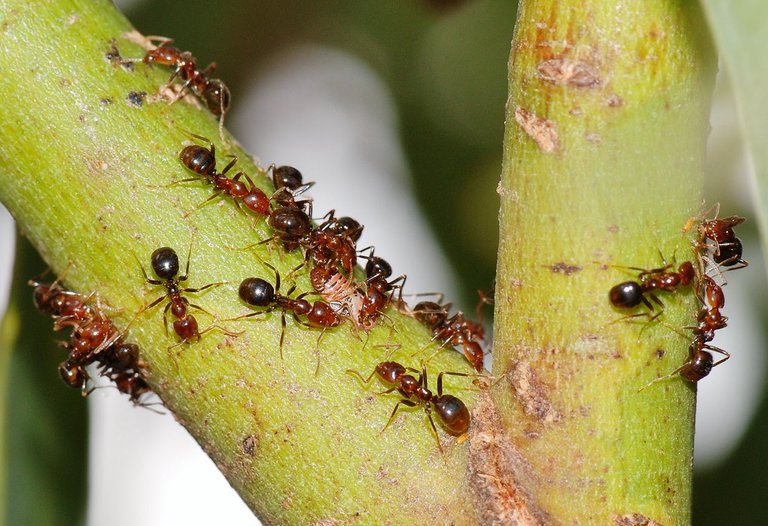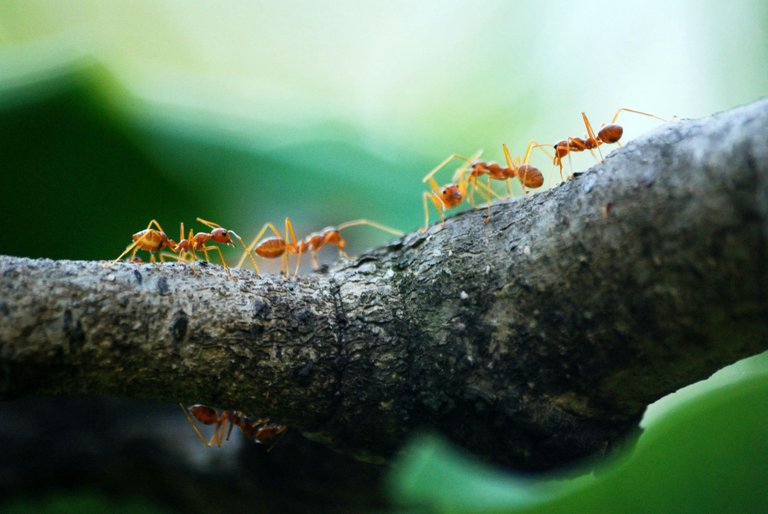I remember talking about mutualism in my previous post, and today my post looks like it is going to revolving around specie relationships with one another especially with plants and insects. While plants have been for a while, flowering plant came into the scene some 160 million years ago and their appearance, they have been in relationship with insects who either give food to the plant, serves as food for some, and sometimes they are responsible for reproduction. Their evolution and relationship is twisted and will agree that their relationship is a necessary good or evil for either of them.
While beetles, bees, and butterfly are well known to have a very robust relationship with plants, people do not know that ants also have a very good relationship with plants. A very good instance is the tree Triplaris americana with the common name the Novice Tree which houses ants from its root to its leaves. Naturally, we will always often find ants in Mounds and under the ground, but in tree, it is a little strange and so, we can say that they have a relationship but is the relationship one sided or they both enjoy their presence.
In the case of Triplaris americana, the tree hosts the plant for a very long period of time. The ant can live in their colony for decades or for as long as they want and the colony grows as the tree grows. The tree is home to the ant and unlike grounds, hills or mud where ants have to make their homes themselves, with Triplaris americana, they do not have to make the tunnels themselves as this is how the tree exists. The tree provides both a home and food source for the ant as it produces tree saps that the ants digest to produce a nutrient rich food for themselves.
The ant on the other hand eat up leaves that come close to the tree as well as other smaller plants around the tree that could be competing for sunlight and nutrient with the tree. So this means that the relationship between Ants and the Novice Tree is a win-win. You want to ask if there are other plants that houses ant? Actually, there are and that is why scientists have a name for plants that houses ants which they call Myrmecophytes (with Myrmecos = ants, and Phyte = plant) but not all plants and ant relationships are well balanced.
The Acacia tree also houses ants and these ants are very aggressive that they chase away big herbivore animals from the tree thereby preventing the tree from being eaten and in return the tree gives the ant nectar but while giving the ants the gift, it puts a Trojan horse which is a chemical that prevents the ant from digesting nectar from another tree making them slave to the tree.
The Cordia nodosa also houses ants in their nodules known as Domatia and the tree also provide the ant with food and in return, the ant gives them protection from caterpillars. The ants destroy other plants around the Cordia nodosa by injectic formic acid through their sting which acts like an herbicide thereby clearing the surrounding of their home plant. But there is just a thin a thin line between corporation and parasitism and in most cases these organisms can cross them but over time, natural selection does its job.
https://english.cas.cn/newsroom/archive/research_archive/rp2010/201502/t20150217_141953.shtml
https://besjournals.onlinelibrary.wiley.com/doi/pdf/10.1111/1365-2745.12034
https://wiki.santafe.edu/images/3/39
https://pubmed.ncbi.nlm.nih.gov/24188323/
https://esajournals.onlinelibrary.wiley.com/doi/10.1890/08-0010.1
https://www.scielo.br/j/rsbmt/a/pXKbXkpx9NM7KJHp76pNjQx/
https://jhr.pensoft.net/articles.php?id=5518
https://pmc.ncbi.nlm.nih.gov/articles/PMC5397449/
https://www.sciencedirect.com/science/article/pii/S1631069105000922
https://pmc.ncbi.nlm.nih.gov/articles/instance/1688896

